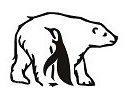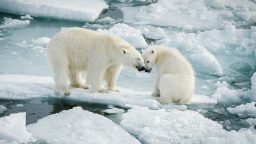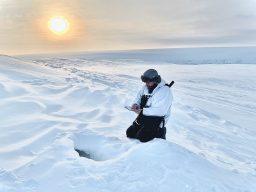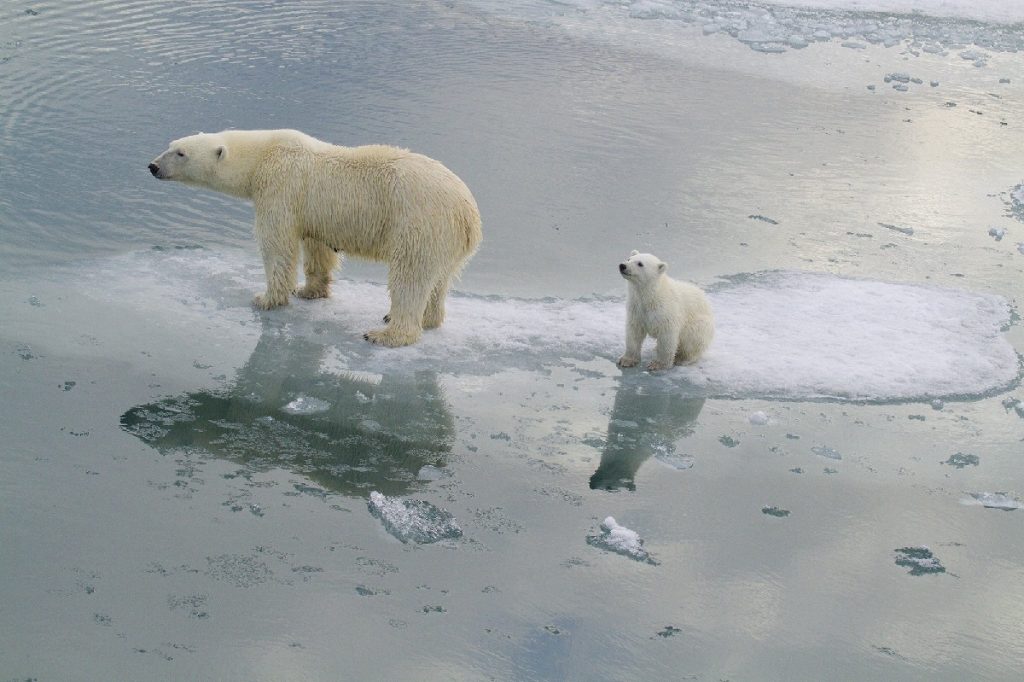
Polar bears are in danger
The polar bear is a symbol of the Arctic, one of the largest terrestrial predators of the planet, lives in the northernmost part of our planet, but this does not make his life difficult. He has adapted well to harsh climatic conditions, can tolerate temperatures up to minus 80 degrees, and go without food for about 2 months.
According to scientists, global warming, pollution of the Arctic environment, excessive fishing — the main factors of influence — will lead to the fact that by 2050 the number of polar bears may decrease by 30%.
The greatest danger to the species is climate change in the Arctic. The sharp warming in recent decades has led to a reduction in the ice cover of the Arctic seas. The share of long-term drifting ice has decreased. For the polar bear, as well as for other species of mammals closely related to sea ice (such as ringed seal, sea hare, walrus, Greenland seal), such changes pose a significant danger.
In the Chukchi sector of the Arctic, this trend has led to the fact that the ice retreats north beyond the 82nd degree of north latitude, that is, more than a thousand kilometers north of the slope of the continental shelf. The shelf zone is the most biologically productive water area, and it contains optimal hunting grounds for polar bears. Therefore, a significant reduction in the ice cover puts these polar predators in extreme conditions, forcing them to strain their species adaptive abilities. A polar bear cannot live in the open sea, therefore, when the ice disappears, these animals are forced to land or leave with the retreating ice to the pole.
The reduction of the ice cover forces bears to travel long distances. This additionally depletes their energy reserves and sometimes leads to death.
The annual complete ice clearance for a long period of the Chukchi and East Siberian Seas leads to the periodic division of the Chukchi-Alaskan population into at least four seasonally isolated groups. Part of the bears land from the disappearing ice fields on Wrangel Island, part – on the northern coast of Chukotka, part – on the coast of Alaska, and part goes with the retreating ice to the north in the Central Arctic basin. The numerical ratio between these groupings depends on the ice situation in a particular season.
Global warming is harming polar bears
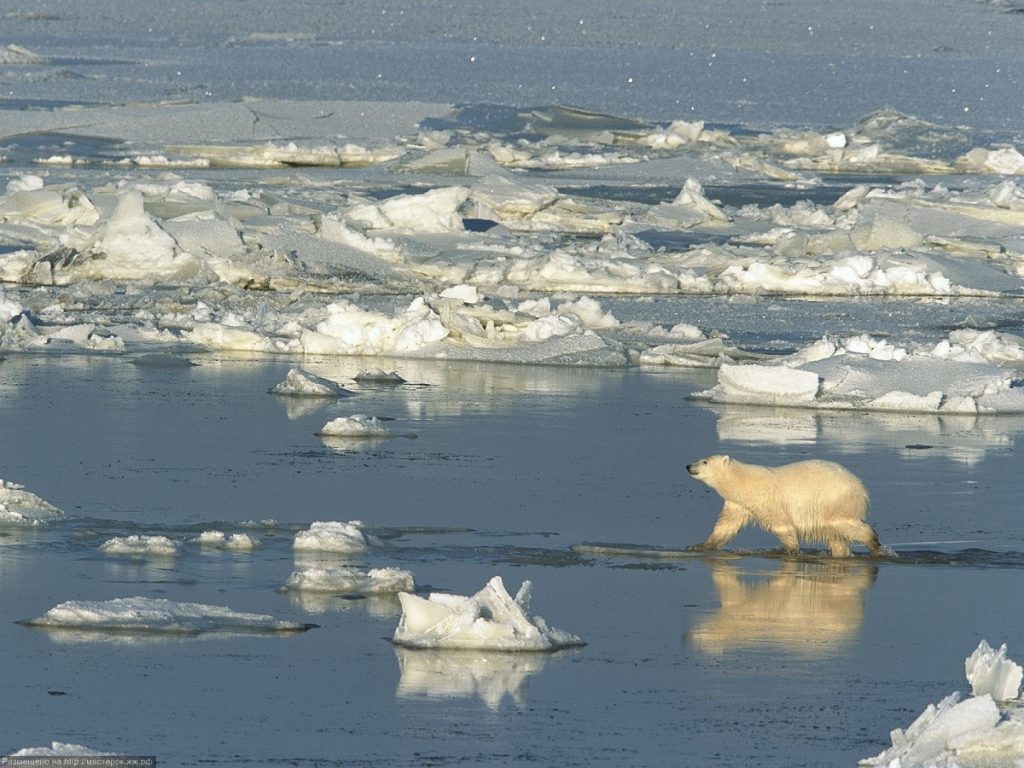
All the information available to date indicates that a number of phenomena are occurring that have an adverse effect on polar bears. The temporary regime of the reproductive cycle of bears is violated – the timing of the females’ occurrence in the ancestral dens is shifted to later ones, more females are forced to arrange dens on drifting ice. Bears are more likely to be in the open sea, more often forced to swim long distances, more often get into a storm, more often and for longer periods are forced to starve as a result of the loss of ice hunting habitats.
At the same time, in the Chukchi-Alaska sector of the Arctic, all the negative factors associated with global warming affect polar bears more strongly than, for example, in the Canadian sector. The annual forced exit of a significant part of the population to land leads not only to starvation of polar bears, but also increases the number of meetings with humans, and, consequently, an increase in the risk of conflict situations.
The appearance of a significant (in comparison with the periods of ice optimum) number of polar bears on the shore does not indicate an increase in their numbers, but, on the contrary, that the population is experiencing significant stress. In these conditions, it is necessary to strengthen the protection of the polar bear, an essential part of which should be the effective prevention of conflict encounters with humans and territorial protection of coastal areas of the land. This is what the bear patrols in Chukotka are aimed at.
Another important negative factor is the pollution of the Arctic. Marine waters and coastal ecosystems are polluted by fuel combustion products, heavy metals, fuels and lubricants, oil and other pollutants. The polar bear is a long—lived predator, so its body is exposed to high concentrations of many anthropogenic toxic substances.
The polar bear is an indicator of the state of the Arctic

A similar situation is observed with the transfer of air masses and the “acid rain effect”, when air masses polluted by industrial emissions in Central and Northern Europe come to the area of the European part of the Arctic. At the same time, acid rain is observed, which negatively affects the soils, vegetation and wildlife of the region.
The projected growth in the production, processing and transportation of hydrocarbon and mineral raw materials in the near future will be accompanied by the emergence of new powerful sources of technogenic pollution of the Arctic environment, especially dangerous when working on the continental shelf (extraction and transportation of raw materials).
The polar bear is an indicator of the state of the Arctic. Scientists are investigating this species in order to understand what is happening in this unique and very vulnerable region. If polar bears are at risk, this fact is often a sign that something is wrong with the Arctic ecosystem.
All major environmental threats in the Arctic zone of Russia are mainly associated with increased pollution under conditions of increasing anthropogenic pressure, waste accumulation, high risks in the development of natural resources, global climate change, the development of dangerous ice and other natural processes – all these problems faced by polar bears in the Arctic require a new approach to conservation Arctic environment and polar bears.
We cannot build a fence around the changing habitat of the polar bear, and, more importantly, we ourselves live in this changing habitat. The future of the polar bear is not separated from ours. What affects them affects all of us. Therefore, in order to solve the main environmental problems of our time, it is important for all of us to find various ways to reduce pollution, the amount of waste produced, reduce carbon emissions, actively introducing alternative energy to protect the Arctic nature and save polar bears.
By Yakovlev A.V.
